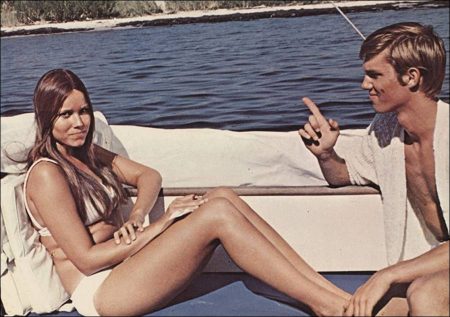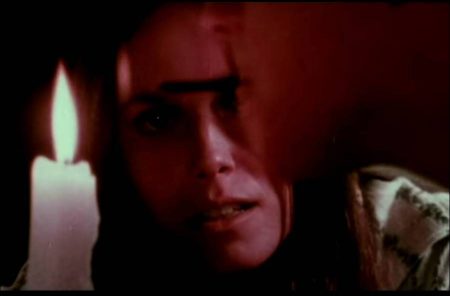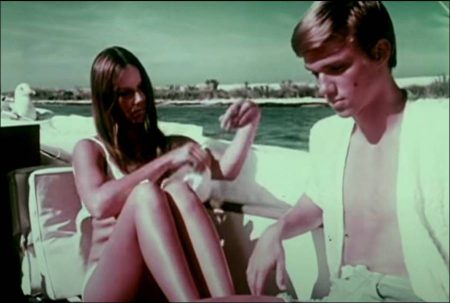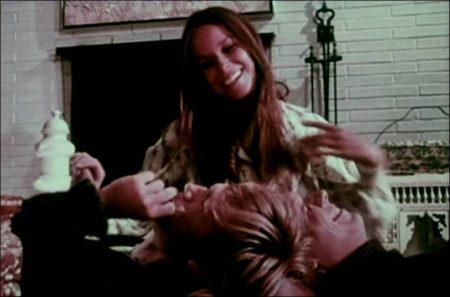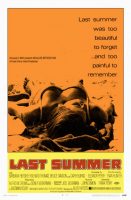Taglines: Last summer was too beautiful to forget. And too painful to remember.
Last Summer movie storyline. Late teens Sandy, Peter and Dan meet while their respective families vacation for the summer on Fire Island, New York. They instantly bond – initially over the rescue of an injured seagull – with the three entering into a friendship where they do everything together in solidarity with little respect for others, especially the adult figures in their life.
They almost become indistinguishable as individuals when together, such as being in a gang. Things change when they meet another vacationing teen named Rhoda later in the summer. Rhoda is shy, seemingly insecure (which the three later learn for good reason), overly analytical and straight-laced, but she needs the acceptance of her peers.
Then, the individual personalities of the three friends begins to emerge, Peter being the sensitive one, Dan the overly confident one who may not have reason to be, and Sandy the manipulative one, especially in using her sexuality to control the two males. But Rhoda, in asserting her own beliefs, may not have a chance when dealing with the three as a group.
Last Summer is a 1969 coming-of-age film about adolescent sexuality based on the novel Last Summer by Evan Hunter. Director Frank Perry filmed at Fire Island locations. The stars of the film are Catherine Burns, Barbara Hershey, Bruce Davison and Richard Thomas. The memorable performance by Burns brought her a nomination for an Academy Award for Best Supporting Actress, and she won a Kansas City Film Critics Circle Award.
Film Review for Last Summer
LIKE Evan Hunter’s novel, Frank Perry’s movie is called “Last Summer,” but it’s really about the silent spring of three beautiful teenagers, and their casual, mindless corruption of a vulnerable friend. With this movie, the fourth feature collaboration of the director and his wife, Eleanor (who wrote the screen adaptation), it’s apparent that the Perrys make movies of vivid performances and mood (“David and Lisa,” “The Swimmer”), rather than of the kind of cohesive style that give a good movie the possibility of greatness.Early in the season at Fire Island, Sandy (Barbara Hershey), Peter (Richard Thomas) and Dan (Bruce Davison) form a sort of post-pubescent, Little Orphan Annie Secret Code Club.
As they swim, sail, and rehabilitate a wounded seagull (both bird and symbol), the friendship seems a funny, almost perfect, trilateral agreement.At first, each seems indistinguishable from the others, although the boys are blond and Sandy has long, dark hair. When they go on sandwich dates to the movies. Peter has the freedom of one breast, Dan the other, and sometimes the hands of all three intertwine in sweaty communion in Sandy’s lap.It’s all very bland and innocent until the three personalties begin to define themselves.
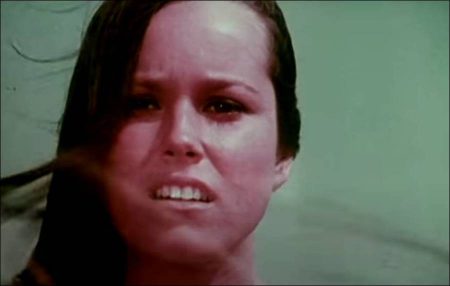
Peter is the basically nice one. Dan may one day be a handsome, Madison Avenue alcoholic, and Sandy’s beauty, wit and high I.Q. disguise a neurotic child who may actually be psychotic. After the seagull, recuperated and tamed, turns on her, she calmly takes it into the woods and bashes its brains out.Into this closed community wanders Rhoda (Cathy Burns), a rather sweet, lonely 15-year-old girl who mouths psychoanalytic jargon with all the assurance of a desperate spinster. By destroying her, Sandy and Peter and Dan effectively lock themselves into aimless adolescence for life.
Mrs. Perry’s screenplay, like the novel, is tough and laconic and exclusively centered on the young people, an isolation that spares us the most of the familiar, easy explanations about How They Got That Way. With the parents little more than illusive, dim, off-screen voices, “Last Summer” can unfold as a simple, summery horror story.The best thing about the movie.
However, are the performances that Perry has gotten from his new players, who manage to seem variously awkward and strident, dense and dumb, and sometimes very innocent, without ever being self-conscious about it. If anything, Perry indulges the cast at the expense of the picture. There is one long monologue in which Miss Burns, who is shaped like a fat mushroom, tearfully describes her mother’s death. It is too good, and it is so calculated that it stops the movie cold.I’m not much worried about the movie’s technical imperfections.
It was shot almost entirely on Fire Island, so that its good, moody color more than compensates for shots that do not match within a single scene.Less tolerable are some resistible, fancy camera movements, including the suddenly subjective use of the camera during a rape scene (when the camera becomes the victim) and the Fitzpatrick Travelogue concluding shot, when the camera, which has been at sea level for 100 minutes, suddenly rises godlike from the beach. Zoom lenses and helicopters must go.”Last Summer,” which opened yesterday at the Cinema I, is cruel and flawed, but, like every Perry film except “Ladybug, Ladybug,” it’s also a movie of elliptical comment that can’t easily be dismissed.
Last Summer (1969)
Directed by: Frank Perry
Starring: Barbara Hershey, Richard Thomas, Bruce Davison, Catherine Burns, Ernesto Gonzalez, Eileen Letchworth, Maeve McGuire, Peter Turgeon, Lydia Wilen, Ralph Waite, Wayne Mayer
Screenplay by: Eleanor Perry
Cinematography by: Enrique Bravo, Gerald Hirschfeld
Film Editing by: Sidney Katz, Marion Kraft
Costume Design by: Theoni V. Aldredge
Art Direction by: Peter Dohanos
Music by: John Simon
MPAA Rating: None.
Distributed by: Allied Artists
Release Date: June 19, 1969
Views: 1249
